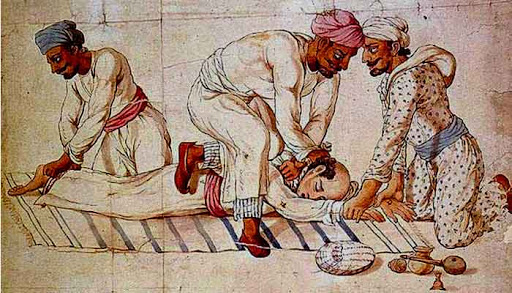Do you remember the commotion from a few weeks ago over Art Spiegelman’s Maus? When a school board in Tennessee removed his celebrated Holocaust graphic novel from the eighth grade curriculum for including profanity and nudity?
Yes, that commotion.
I have been thinking, and thinking some more about it. With mixed feelings.
My first instinct, you see, was to condemn the removal because it seems to me laughably naïve. Are eighth graders really so tender as to require protection from Maus? Like much reporting on the episode, my first reaction was exasperation.
But then came a second impulse. One that recognized opportunity in the sorry episode, just one more in a long chain of sorry censorship episodes. It occurred to me that this one might, finally, provide us with an opening that I have been seeking for a while–an opening to change the way we routinely discuss “free speech” issues.
Because of the way the school board itself framed its actions, we might finally have the chance to put harm—rather than freedom—at the center of our understanding of free speech and censorship.
I know this move—substituting harm for freedom–sounds dangerous, dangerously like giving in to illiberalism. But hear me out. I have an argument to make—one that I have in fact already made at length in a recent essay (“The Ruse of Freedom: A Comparative Essay on Ahimsa and Freedom of Expression”).
In the United States (like most liberal Western democracies), censorship is usually approached as an issue of freedom—the freedom of an individual to express herself; the freedom of a society to exchange information without constraint. This freedom is treated as a paramount value in such societies.
But is it? Or, rather, should it be?
Is it really helpful to think of public speech as essentially about freedom? After all, there certainly is another, opposing, value that is also routinely invoked in “free speech” debates: avoidance of harm, or harm-less-ness. Most often, this value is invoked only to be dismissed or else severely curtailed.
Consider John Stuart Mill’s essay On Liberty, so influential in establishing the “free” in free speech. As its title suggests, the essay exalts freedom. It acknowledges the capacity for speech to do harm, but makes room only for material and immediate harm (in a popular illustration, crying fire in a crowded theater) in restricting the freedom to speak.
What would it mean, though, to reverse the Millian hierarchy of priorities and to raise up harm-less-ness over freedom? How would this reprioritization change our debates about free speech?
There is a great ethical tradition that provides answers to these questions—the tradition of ahimsa (in Sanskrit, or avihimsa in Pali). This tradition does not exalt freedom over harm-less-ness. Rather, in it—the acme of the tradition was Buddhist, though the tradition itself is broader—harm-less-ness is paramount, not freedom.
Ahimsa is routinely translated as non-violence but a better rendering would be avoidance of harm, certainly avoidance of giving harm but also of receiving it—that is, a comprehensive condition of harm-less-ness. Buddhist commentators generally understand ahimsa in this way. Unlike Mill, harm here is understood not just in its material and immediate manifestation. Most traditions of ahimsa recognize the capacity of not only deeds but also words and even thoughts to do harm. Hence the especial relevance of this tradition for “free speech” debates.
What would it mean, following the ahimsic tradition, to consider the Tennessee board’s action on Maus as not primarily banning, not as a curtailment of a freedom, but as a form of harm? What would it mean to give priority, in thinking about Maus as well as other targets of censorship, to the tradition of ahimsa over the political traditions that exalt freedom above all else? Ironically enough, the school board itself, by raising the issue of harm to eighth graders, has opened the door to these questions. Further irony: surely by now the evidence is clear that the Millian individualist tradition is unable to guarantee the very freedoms it wants to exalt.
Just to be clear: I happen to think that the removal of Maus from the eighth grade curriculum, rather than the profanity or the nudity in Maus, is the harm-ful act. I am prepared to defend my position via the ahimsic tradition. I am prepared to argue (as I have in the essay I have referred to) that my stance—different than objecting to the banning of Maus, or making a stand on freedom—is useful in moving us past the tiresome dead ends of “free speech” controversies, by which we are roiled week in and week out.
Paradoxically perhaps—but not at all surprisingly—many freedoms that we value would also be valued in the ahimsic traditions I am espousing. After all, the denial of freedom can also be a form of harm. However, any and every freedom would not be placed above the value of harm-less-ness.
And that would be a good thing because it might begin to provide us new ways of thinking about the centuries-old problem of “free speech.”




